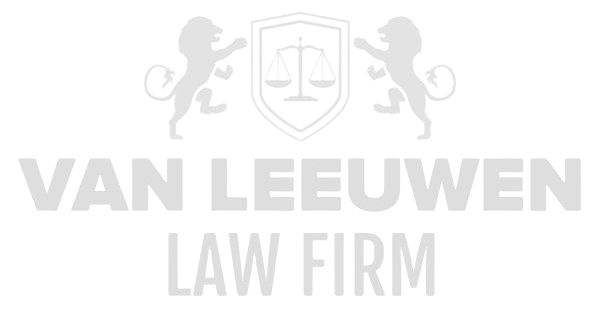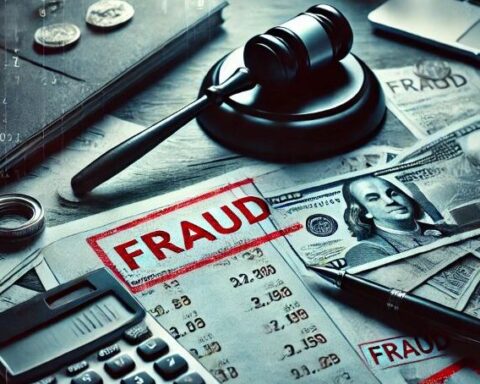The landscape of modern business is increasingly shaped by a complex web of laws, regulations, supervisory mechanisms, and legal obligations. In a world where transparency, integrity, and compliance are no longer optional but rather fundamental pillars of sustainable business practices, the initiation of in-depth corporate investigations is no longer a luxury but an unavoidable necessity. Companies operating at the intersection of cross-border transactions, international markets, and strategic interests are increasingly confronted with substantial risks in the areas of fraud, corruption, conflicts of interest, and other integrity violations. These risks often arise suddenly and unpredictably, with legal and financial consequences so far-reaching that they may endanger the very survival of the organization. In such cases, only a meticulously executed, legally informed corporate investigation can uncover the truth and stabilize the company’s foundations.
The nature of corporate investigations is rarely straightforward. What may initially appear to be an administrative irregularity can, upon closer examination, evolve into a complex web of internal misconduct, external collusion, or structural governance failures. Every step in the investigation therefore demands a delicate interplay of legal expertise, forensic acumen, and strategic restraint. The pursuit of truth, which lies at the heart of any corporate investigation, must never be compromised by bias or political pressure from within or outside the organization. On the contrary, it requires the fearless willingness to scrutinize, question, and reconstruct—regardless of rank or relationship. Only then can the integrity of the investigative process be safeguarded and the company credibly position itself before regulators, shareholders, and other stakeholders.
Context and Urgency of Internal Investigations
Within the context of risk management and compliance, the urgency of corporate investigations is inextricably linked to the evolving nature of oversight and regulation. Supervisory authorities, both national and international, are applying increasingly stringent standards regarding transparency, reporting obligations, and the resolution of alleged misconduct. These heightened expectations place companies under growing pressure to credibly and verifiably demonstrate that they possess adequate mechanisms to detect, report, and investigate internal irregularities. The obligation of self-cleansing, often driven by sectoral codes of conduct or international anti-corruption legislation, requires not only the establishment of internal controls but also the actual application of these measures in cases of suspected violations. Failure to respond adequately to signs of integrity breaches may result in severe penalties, reputational damage, and, in the worst-case scenario, criminal prosecution.
In this context, the process of corporate investigation functions as the legal nervous system of the organization: it serves both as an early warning mechanism and a corrective tool. In practice, this means that a well-conducted corporate investigation goes beyond the mere reconstruction of events. It requires an analysis of the context in which the events took place, the underlying motives of those involved, the organizational structures that enabled the misconduct, and the potential gaps in the compliance framework. This is where the connection between risk management and law becomes apparent: it is not solely about punishing wrongdoing but about exposing and removing its root causes.
It must also be recognized that in many cases, the decision to initiate a corporate investigation is itself a legal and strategic one, prompted by signals that are initially ambiguous or incomplete. The ability to distinguish between incidents that warrant forensic depth and legal rigor, and those that can be addressed through administrative or disciplinary measures, is an art in itself. Overestimating the severity may lead to undesirable escalation; underestimating it can prove fatal. Striking the right balance between proportionality, effectiveness, and legal precision is essential—and only a deeply rooted legal sensibility can determine the correct course.
Structure, Phasing, and Legal Positioning
The structure of a corporate investigation must be embedded in a clear legal framework that, from the outset, guarantees reliability, proportionality, and independence. Every investigation begins with an intake phase in which the scope of the investigation, the nature of the suspicions, and the persons involved are identified. This phase is critical for the subsequent legal sustainability of the investigation. Careless or legally incorrect delineation can not only undermine the evidentiary value of the findings but also expose the company to legal liability. Specific considerations such as labor law consequences, data protection, and the rights of employees to participate must be carefully assessed from the very beginning.
In the execution phase of the investigation, where evidence is gathered and witnesses are interviewed, legal and forensic discipline is paramount. The manner in which interviews are conducted, documents are secured, and digital data is analyzed must adhere to strict rules regarding proportionality, authenticity, and non-discrimination. Furthermore, the substantive analysis of facts must be accompanied by a normative legal framework, so that the final conclusions are not merely descriptive but legally testable. Each established fact must be qualified within the context of relevant laws, internal regulations, and sectoral standards.
The concluding phase of a corporate investigation carries particular sensitivity. Drafting the final report is a legal exercise of the highest order. The formulation of findings, conclusions, and recommendations demands a highly precise balancing of legal, reputational, and compliance considerations. An overly assertive report can trigger unnecessary legal proceedings by those involved, whereas an overly cautious tone may undermine the credibility of both the investigation and the compliance structure. The skill lies in drafting the report in such a way that it can withstand external scrutiny by regulators, courts, or other stakeholders.
The Intersection of Internal Investigations and Criminal Law
Corporate investigations are uniquely positioned at the intersection of internal oversight and criminal liability. When suspicions arise of serious misconduct such as fraud, corruption, or money laundering, there is a substantial chance that the findings of the investigation will eventually come under the scrutiny of the Public Prosecution Service or other judicial authorities. This reality necessitates a careful approach to the rights of those involved, the legal position of the company, and the manner in which the investigation is documented from the very beginning. Every step taken may later be examined in a criminal proceeding. The need to uphold the nemo tenetur principle, the right to a fair trial, and the avoidance of self-incrimination are therefore not abstract ideals but operational requirements that shape the investigative process.
A recurring legal dilemma in this context concerns whether—and to what extent—findings should be voluntarily disclosed to the authorities. The balance between transparency and self-preservation requires not only legal expertise but also strategic insight into the dynamics of investigation, prosecution, and sanctioning. In some instances, the initiative to cooperate with authorities may be considered a mitigating factor, potentially resulting in reduced penalties or dismissal of charges. In other cases, disclosing internal information may lead to legal complications or reputational harm that affects the company long-term.
It is also essential to recognize that corporate investigations are not merely aimed at establishing facts but often also at formulating a legal defense strategy. When it becomes apparent that the company may have exposed itself to sanction risks, the outlines of a legal position must be developed in parallel with the factual inquiry. This concerns not only the substance of legal defenses but also the way the company presents itself publicly and communicates externally. The importance of coherence between internal findings and external messaging cannot be overstated.
Implications for Governance and Oversight Structures
The outcomes of corporate investigations typically have far-reaching implications for the company’s governance and oversight structures. The establishment of integrity violations, conflicts of interest, or systemic failures in internal controls almost inevitably calls into question the adequacy of existing supervisory mechanisms. In such cases, it is not uncommon for restructuring of executive boards, supervisory boards, or compliance departments to be necessary in order to credibly restore governance. This transformative effect of corporate investigations makes the practice more than a mere legal exercise: it is a strategic instrument that, when applied carefully, can recalibrate the entire corporate culture.
One of the key lessons arising from corporate investigations is the necessity of strengthening internal checks and balances. Too often, it becomes clear that internal power concentration, a lack of diverse perspectives, and insufficient critical feedback contributed to the occurrence or persistence of misconduct. Establishing independent audit and compliance committees, formalizing whistleblower procedures, and reinforcing internal reporting structures are logical yet significant follow-up actions that may arise from an investigation. In this regard, only a legal foundation can provide the legitimacy and robustness needed for such structural reforms.
Finally, it should be emphasized that corporate investigations often lead to a renewed relationship between the company and external regulators. The manner in which the investigation is conducted, the quality of the report, and the follow-up on its recommendations are usually closely monitored by supervisory authorities. In this sense, a thorough corporate investigation serves as a strong signal of a company’s commitment to compliance and its capacity for self-correction—thus fostering regulator confidence. Conversely, a deficient or careless investigation may result in escalation, increased oversight, or even formal sanction procedures.
Strategies for Risk Mitigation After the Investigation
After completing a thorough corporate investigation process, the company faces the complex task of translating the findings into concrete and effective risk mitigation measures. This phase is by no means merely administrative; rather, it forms the legal culmination of a process that manifests itself in policy reform, organizational strengthening, and legal embedding. A carefully designed improvement trajectory, derived from the conclusions of the investigation, requires a strategic approach involving all relevant stakeholders, including compliance officers, legal advisors, external regulators, and governing bodies, in a coherent and transparent manner. The measures chosen should not merely treat symptoms but serve as a fundamental response to the structural vulnerabilities revealed by the investigation.
Implementing risk mitigation measures demands a meticulous legal review of existing protocols, codes of conduct, and internal control systems. Every element identified as dysfunctional or risky during the corporate investigation analysis must be reformulated within a legally consistent and verifiable framework. Standards related to data protection, labor law, financial supervision, and anti-money laundering legislation play a prominent role here. Without such normative anchoring, the company risks falling into cosmetic changes that will again be deemed insufficient at the next audit or incident. Legal precision combined with managerial decisiveness forms the cornerstone of a successful recovery process.
Another essential aspect of this phase concerns internal communication about the investigation results and the resulting measures. The way this communication is structured partly determines the credibility of the governing body and the extent to which employees are willing to comply with the renewed set of norms. However, the legal implications of internal transparency must be carefully weighed against possible risks in terms of liability, personal data protection, or prejudicial effects in ongoing legal proceedings. Only a strategically well-considered and legally grounded communication strategy can find the right balance.
Interaction with Supervisory Authorities and Agencies
A corporate investigation that uncovers serious deficiencies or legal violations can hardly be concluded without a phase of accountability toward relevant supervisory authorities. This interaction with external regulators—such as the Financial Markets Authority (AFM), the Data Protection Authority (AP), the Dutch Central Bank (DNB), or even international institutions like the U.S. Securities and Exchange Commission (SEC) or the UK Serious Fraud Office (SFO)—requires a legal approach of the highest level. The manner in which the company reports its findings and the procedures followed largely determines the response of these regulators. This response can range from understanding and cooperation to formal sanction procedures, with the legal quality of the investigation and the sincere effort to remedy acting as evaluation criteria.
In practice, regulators repeatedly value the extent to which a company demonstrates that it has acted independently and decisively. Demonstrating internal investigative efforts, undertaking corrective measures, implementing improvement plans, and complying with reporting obligations are seen as indications of a learning and self-cleaning organization. At the same time, it is crucial that the company prudently protects its legal position. Every detail shared with regulators can later be raised in sanction procedures or civil liability claims. The dialogue with regulators is therefore a legal exercise that excels in precision, nuance, and strategic realism.
Maintaining credible and legally substantiated communication with external agencies also requires that the corporate investigation report meets the requirements of transparency, traceability, and legal consistency. The documentation of interviews, findings, and conclusions must be prepared in such a way that it can withstand external scrutiny and preferably aligns with the legal frameworks employed by the regulator. It is advisable that legal specialists remain involved in this phase to prevent misunderstandings, hasty conclusions, or one-sided statements. Only then can the company convincingly position itself as a responsible actor within the legal and ethical field.
Responsibility and Liability Within the Organization
One of the most significant implications of a corporate investigation concerns the legal assessment of individual and collective responsibilities within the company. Determining who was involved at what moment, in what capacity, and with what knowledge in the relevant facts is a legal minefield that requires utmost precision and objectivity. These often relate to questions of disciplinary measures, summary dismissal, civil liability, or even criminal prosecution. Careless assessment of these responsibilities can lead to costly legal proceedings, reputational damage, or the destruction of the entire investigation process.
The legal review of individual responsibilities requires a detailed analysis of job descriptions, allocation of powers, information provision, and reporting within the organization. Every decision, action, and omission is assessed in this context based on standards such as reasonableness, care, and conformity with internal regulations. Additionally, legal principles such as the right to be heard, the principle of trust, and proportionality of sanctions play a crucial role. The legal field is complex and leaves little room for improvisation or gut feelings: only a legally substantiated and consistently applied measure will withstand external scrutiny.
Besides individual responsibilities, the legal liability of governing bodies or supervisory authorities can also come under scrutiny. Questions about whether a board of directors exercised adequate supervision, whether a supervisory board intervened in time, and whether compliance officers properly fulfilled their signaling function can lead to substantial civil liability claims. In this context, it is important that corporate investigations serve not only as a tool for fact-finding but also as a legal defense line against future claims. A transparent, objective, and legally verifiable investigation is thus not only an obligation but a protection mechanism of fundamental importance.
Repositioning the Organization and Strategic Reputation Recovery
After the storm of a thorough corporate investigation, the company faces one of its most delicate tasks: strategically repositioning itself in the market, among stakeholders, and within the social context in which it operates. This phase is not mere communication superficiality but rather a legal and strategic exercise of the highest order. Reputation recovery after an investigative report exposing breaches of integrity or governance failures requires a thoughtful and legally grounded trajectory in which transparency, decisiveness, and responsibility are central. Every statement, policy change, and public declaration must be tested against the legal context and aligned with the expectations of regulators, shareholders, and social actors.
Regaining trust begins with implementing the recommendations arising from the investigation but only ends when the company has credibly demonstrated that it has structurally learned from its shortcomings. In this regard, it is essential that legal measures go hand in hand with managerial renewal and cultural reform. The appointment of new directors, reformulating core values, introducing new compliance structures, and strengthening the legal function within the company are just some examples of interventions that combine legal legitimacy with public credibility. Failure to legally substantiate these reforms or to communicate them adequately inevitably leads to relapse and further loss of authority.
Finally, reputation recovery must be legally anchored in long-term strategy and compliance monitoring. Only if it can be demonstrated that the legal structure and compliance culture have been fundamentally and sustainably changed can the company truly leave the past behind. This requires continuous legal review, periodic external audits, and transparent reporting to regulators and the public. Corporate investigations therefore do not end with a report but with a recalibration of the company in its full legal, managerial, and societal context. Every element of this repositioning demands well-considered legal insight, strategic acumen, and an unwavering commitment to structural integrity.
Legal Implications for Future Transactions and Partnerships
When a company faces the consequences of a comprehensive corporate investigation, the legal implications often profoundly affect how future commercial relationships are structured. The findings of the investigation do not remain internal only but resonate with the trust that external parties—such as suppliers, joint venture partners, investors, or shareholders—place in the governance of the organization involved. Every transaction, no matter how business-oriented, is infused in this new post-investigation environment with legal caution, renewed due diligence requirements, and critical assessments of integrity.
The legal framework of contracts must be reassessed in this new light. General terms and conditions, liability clauses, indemnity provisions, and compliance declarations will increasingly be formulated more strictly, with particular attention to anti-corruption, sanctions legislation, and data integrity. Parties wishing to engage in cooperation with an organization recently subjected to a corporate investigation will demand transparency, risk mitigation, and monitoring mechanisms. Lawyers and legal departments are therefore confronted with the necessity to apply a preventive legal review to every contractual relationship that may previously have been considered unnecessary.
At the same time, the outcome of a thorough corporate investigation functions as proof of legal and managerial self-cleaning capacity. This, provided it is communicated transparently and legally correctly, can actually increase the trust of potential partners. If the company has demonstrated legal maturity, structural reforms, and adequate sanctioning of internal misconduct, it may find itself in a stronger negotiating position than before the crisis. In this sense, the legal aftermath of an investigation acts as a catalyst for a renewed, legally responsible positioning within the business ecosystem.
Internal Strengthening of Legal and Compliance Functions
The aftermath of a corporate investigation unflinchingly puts the company’s own legal structure under scrutiny. In particular, the effectiveness and independence of the legal department and the compliance function come under the microscope. If these internal structures proved unable to detect, address, or internally escalate risks in the lead-up to the misconduct, a fundamental revision is inevitable. The legal implications of this are far-reaching and touch the core of corporate governance.
Strengthening these functions requires not merely staff expansion but a fundamental recalibration of their position within the organizational power structure. The legal department must have direct and independent access to the highest management level, without its role being subordinate to commercial objectives. Compliance officers must be able to operate with a degree of autonomy that allows them to report misconduct without fear of repercussions or marginalization. Furthermore, the legal structure must be provided with an adequate budget, digital tools, and access to external expertise to ensure its effectiveness is maintained.
From a legal perspective, this strengthening must also be accompanied by explicit mandates, laid down in regulations, policy documents, and job descriptions that are verifiable in internal and external audits. Failure to formalize authorities, responsibilities, and escalation procedures can lead to new legal vulnerabilities in future conflicts or investigations. In that respect, upgrading legal and compliance functions is not only organizationally desirable but a legally necessary condition to prevent recurrence of incidents.
Corporate Investigations in Cross-Border Contexts
When a corporate investigation involves cross-border aspects—such as international transactions, foreign subsidiaries, or foreign regulations—the legal complexity increases exponentially. The investigation must then relate to multiple legal systems, languages, cultures, and compliance requirements, which constitutes a delicate and risky legal terrain. In such cases, involving specialized lawyers with knowledge of international law, extraterritorial regulations, and mutual legal assistance is indispensable. The legal consequences of negligence in this context can be catastrophic.
One of the main challenges concerns dealing with foreign authorities and regulators. Organizations operating in multiple jurisdictions must take into account rules such as the U.S. Foreign Corrupt Practices Act (FCPA), the UK Bribery Act, and various European regulations on competition, privacy, and financial reporting. Violations in one jurisdiction can have repercussions in another, making coordination and legal consistency essential. The company risks fines, sanctions, or even criminal prosecution if it fails to approach these interactions correctly from a legal perspective.
Moreover, internal investigation measures—such as interviewing employees, searching emails, or temporarily freezing positions—must be compatible with local laws regarding labor law, privacy protection, and evidence. The legal safeguards that are standard in the Netherlands may not apply, or may even be prohibited, in other jurisdictions. A legally insufficiently coordinated international investigation process can therefore lead to exclusion of evidence, reputational damage, or international claims. Legal precision, cultural awareness, and diplomatic sensitivity form the cornerstones of success here.
Long-Term Monitoring and Legal Safeguarding of Recovery
A corporate investigation without systematic follow-up is nothing more than a temporary patch on a structural problem. Legal practice requires that the implementation of reforms and risk mitigation measures be subjected to long-term monitoring and evaluation. This follow-up serves not only as a control instrument but as a legally anchored safeguarding measure demonstrating that the company remains committed to integrity and compliance. Failure to conduct such monitoring usually leads to recurrence and—legally speaking—increased liability in the event of another incident.
In this context, monitoring must be embedded in a formal legal structure governed by independent bodies. This may include an external compliance officer reporting periodically to the supervisory board, independent audits with legal review of core processes, or so-called integrity committees preparing legal assessment reports. The form is subordinate to the goal: sustainable legal safeguarding of norm-compliant behavior. Documentation of these processes is crucial for future assessments by regulators, shareholders, and possibly judicial authorities.
Finally, this monitoring must be accompanied by legal education within the organization. Periodic training on laws and regulations, internal procedures, reporting obligations, and whistleblower protection are not optional tools but legal pillars of the preventive infrastructure. Only if every employee understands the legal implications of their actions and the organization systematically verifies that this knowledge is applied can a true legal culture be said to exist. In this sense, a corporate investigation is not the end but the beginning of a new legal era within the company.
The Strategic Role of External Legal Advisors After an Investigation
In the aftermath of a corporate investigation, the strategic importance of external legal advisors takes a central position within the legal recovery and strengthening process. Their role goes beyond the traditional function of advocate or representative. In this context, they become legal architects of a recovery trajectory focused not only on risk management but on the sustainable legal transformation of corporate behavioral patterns. A competent lawyer acts as a strategic sounding board, legal safeguard, and operational overseer of the implementation of structural changes.
The choice of external legal assistance is therefore not merely a formal matter but an essential strategic decision with far-reaching consequences. Not every lawyer is equipped to understand the multilayered complexity of post-investigation compliance. The right advisor possesses in-depth knowledge of governance, sanctions law, labor relations, forensic techniques, and sector-specific laws and regulations. Additionally, they must have a sharp legal moral compass, operate independently, and have the courage to make tough recommendations, even if these provoke resistance at the executive level.
Moreover, the external advisor must fulfill a pivotal role in the legal coordination with regulators, insurers, financiers, and other stakeholders. The company finds itself in a legally vulnerable position where every statement, document, or action can give rise to secondary liability or new legal proceedings. The strategic lawyer navigates this minefield with precision and caution, ensuring every step is deliberate, documented, and legally grounded. Their presence is not just desirable but absolutely indispensable in the aftermath of an investigation.
Reputation Management in Light of Legal Liability
From a legal perspective, reputation management is not a superficial PR matter but a complex exercise closely intertwined with liability law, administrative law, and criminal law. In a time when public perception is rapidly shaped by digital media, the manner in which a company communicates about a corporate investigation is of direct legal significance. Incorrect, premature, or incomplete statements can lead to claims by shareholders, customers, or employees, while overly closed communication can breed distrust among regulators and judicial authorities.
The legal finesse lies in balancing transparency with legal caution. Every press release, interview, and statement must be assessed for potential legal implications. This includes risks of defamation or libel claims, possible admission of liability, breach of confidentiality obligations, or jeopardizing ongoing procedures. Communication must be legally accurate, both in factual wording and in the interpretation that follows. In this context, the lawyer is not only an advisor but also an editor and ultimately responsible for every public expression.
Effective reputation recovery thus requires a legally substantiated communication strategy. This strategy must take into account the various audiences — from customers and staff to investors and regulators — and their specific legal positions. The company must demonstrate that it has not only addressed an isolated incident but has structurally learned, reformed, and recommitted itself to the rule of law. This calls for legally grounded storytelling in which the transformation is convincingly and verifiably presented to the outside world. The lawyer here is not merely a guide but the foundation of credibility.
Insurance Law Complications and Legal Dispute Resolution
An often underestimated consequence of corporate investigations concerns the complex insurance law dimensions they can trigger. Organizations increasingly rely on directors & officers (D&O) insurance, professional liability insurance, or cyber risk policies to cover legal risks. However, in the context of an investigation, it is rarely immediately clear whether and to what extent coverage exists. Interpretation of policy terms, notification obligations, and the scope of excluded conduct often become subjects of intense legal disputes between insurer and insured.
Central to this is the legal qualification of the facts: is it an error, negligence, or intentional wrongdoing? Many insurance policies exclude ‘intentional wrongful conduct’ or ‘fraudulent acts,’ but the line between gross negligence and intent is razor-thin in practice. Legal defense against a denial of coverage therefore requires in-depth analysis of case law, policy history, and factual evidence. Timing is crucial: too late a notification may lead to forfeiture of rights, while too early and incomplete notification risks damaging the internal negotiation position.
If dispute resolution becomes inevitable, strategic litigation is key. This may involve filing a declaratory judgment claim to enforce coverage or conducting negotiations to reach an amicable settlement while preserving mutual face. The lawyer must masterfully connect insurance law arguments with the company’s broader legal strategy, while managing the involvement of stakeholders such as directors, shareholders, and supervisory boards. Here, true mastery of legal chess becomes visible.
Post-Investigation Self-Evaluation: Legal Self-Reflection as a Structural Principle
Finally, legal self-evaluation following a corporate investigation forms a moral and structural closure to the entire process. Not merely to reflect on what went wrong, but primarily to analyze from a legal perspective whether internal systems, policies, and governance strategies are future-proof. This self-evaluation must not be a cosmetic exercise aimed at ticking off external expectations but should function as a legal conscience examination reviewing the entire normative framework of the organization.
A robust legal self-evaluation requires methodological precision. This involves using legal assessment frameworks, external audits, independently prepared evaluation reports, and structured feedback sessions with internal stakeholders. Every legal shortcoming — whether in contract management, reporting procedures, HR rights, or internal reporting lines — must be relentlessly and directly analyzed. Not for condemnation but for legal reconstruction. This analysis must result in concrete action points with clear responsibilities, timelines, and evaluation moments.
Embedding legal self-reflection structurally is not a luxury but a necessary condition for lawful entrepreneurship. In a time when societal tolerance for legal derailment is minimal, organizations are expected not only to act within the law’s boundaries but to internalize the law as a guiding principle for all their actions. Legal self-evaluation in this context is not an end but a beginning — the foundation of a legal culture where law, responsibility, and integrity form the core of the business model.








